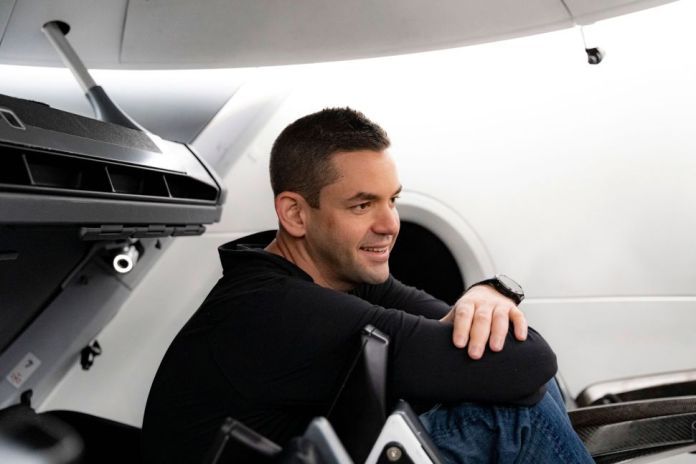According to Inspiration4’s fearless leader, commander Jared Isaacman, the “stars have always aligned” for the charitable mission to Earth orbit.
Isaacman, a billionaire tech entrepreneur from New Jersey, chartered Inspiration4, the all-civilian SpaceX flight that, on Sept. 14, will launch a crew of four on a three-day journey to space. The trip was designed with the explicit intent to benefit St. Jude Children’s Research Hospital, which treats and researches childhood cancers and other diseases.
Now, with less than a week until launch day, Isaacman is “super confident” in the training that he and the rest of the crew have gone through in order to successfully complete the mission, which will be the first all-civilian mission to orbit Earth. Inspiration4will carry Isaacman along with crew pilot Sian Proctor, a geoscientist, science communicator and Afrofuturism artist; medical officer Hayley Arceneaux, a St. Jude physician assistant and childhood bone cancer survivor; and mission specialist Chris Sembroski, a data engineer from North Carolina.
The crew is scheduled to launch on board a SpaceX Crew Dragon capsule atop a Falcon 9 rocket from Kennedy Space Center’s Pad 39A on Tuesday (Sept. 14) at 8 p.m. EDT (midnight on Sept. 15 GMT).
“I’ve said it really from the beginning that the stars have always aligned with Inspiration4. Every step of the way, from the timing of even having this opportunity in the first place, to the crew selection process to this unbelievable crew that I’m fortunate enough to go fly to space with. It’s all awesome,” Isaacman told Space.com.
But the road to space hasn’t been easy.
“It’s been a really intense five, six months,” Isaacman said.
“I don’t even really stop to think about it that much,” he said. “You know, we go into training, we learn the academics, we apply that in simulations.” Sometimes, he added, people outside the crew have to remind him “about the fact that the four of you didn’t even know each other five months ago, and now you just worked through this Apollo 13-like moment in the simulator and brought the spacecraft back to Earth.”
“SpaceX is not going to put us up into orbital spaceflight unprepared,” Isaacman said. “They didn’t take it easy on us.”
Isaacman described the crew’s first two weeks training at SpaceX as “hell week,” as they embarked on “academics at another level.”
“I’ve been flying high-performance aircraft for a really long time. I’m used to studying up on systems. I wasn’t used to 3,000 pages getting dropped on us in the first couple of weeks,” he said. “We had to learn a lot of things. But, you know, once you get through it, and you digest all the information, then the fun part begins where you get to apply it in simulations.”
Isaacman shared that the last couple of months of training, leading up to launch day, have included a lot of those simulations — simulating off-nominal situations, nominal (or “normal”) situations, emergencies and more. It’s been “certainly the most fun part of training,” Isaacman said.
But, he added, “we’re just a crew, and this is what we do.”
So what does it all mean to the high-flying commander of Inspiration4, the first-ever all-civilian mission to launch into orbit around Earth?
“There’s so much responsibility that comes with you know, being a first, and Inspiration4 is a big first,” Isaacman said.
“We care about this not being a world where 600 people have gotten on orbit; we want it to be 600,000,” he said. “SpaceX didn’t build self-landing rockets for the few, they built it for the many.”
Isaacman added that the crew remains extremely dedicated to the mission’s cause, raising money for St. Jude.
“We do believe that you have to address some of the problems of today to earn the right to make progress for tomorrow. If we can achieve those objectives, it’s mission success for us,” Isaacman said. “Inspiration4 is supposed to be about inspiring people, certainly as to what’s possible up in space. That’s a big part of our mission, but also what we can accomplish here on Earth.”
